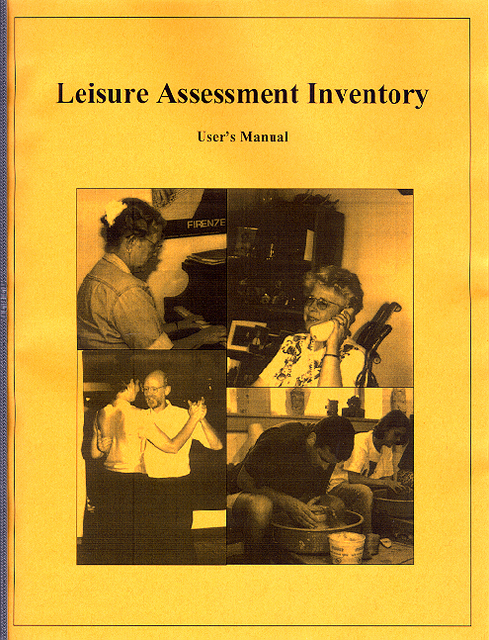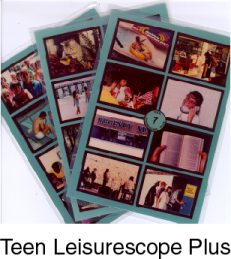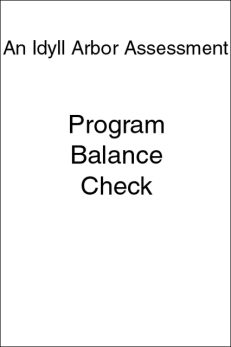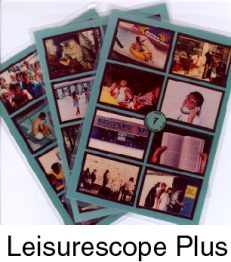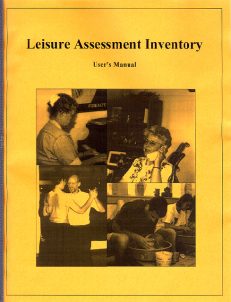Description
The Leisure Assessment Inventory (LAI), measures the leisure behavior of adults through its four components: 1. the Leisure Activity Participation Index (LAP), 2. the Leisure Preference Index (L-PREF), 3. the Leisure Interest Index (L-INT), and 4. the Leisure Constraints Index (L-CON).
* The Leisure Activity Participation (LAP) index reflects the status of a person’s leisure repertoire; thus, it presents a measure of activity involvement. The LAP evaluates the individual’s current leisure functioning as determined by a set of pictures of activities that are typical of adult leisure. It is possible, and perhaps even likely, that individuals are involved in activities that are not included in the LAI set of pictured activities. Still, the LAP does provide a fairly large set of possible activities and can be useful in noting changes in leisure repertoire, such as fewer activities, more activities, and changes from dominantly passive or active activities to an alternate pattern.
* The Leisure Preference Index (L-PREF) provides a measure of leisure activities in which the individual would like to increase participation. This index indicates a degree of preference for some activities over other activities. The L-PREF is influenced by current involvement in activities that are presumably important and meaningful to the participant. The L-PREF is sensitive to the level of self-determination in the individual’s leisure in that the index is influenced by sustained involvement or lack of involvement in preferred activities.
* The Leisure Interest Index (L-INT) measures the degree of unmet leisure involvement based on the selection of activities in which the individual has an interest, but in which he or she is not participating or is prevented from participating. The L-INT is sensitive to the unmet needs in leisure, another aspect of choice and self-determination.
* The Leisure Constraints Index (L-CON) of the LAI assesses the degree of internal and external constraints that inhibit participation in leisure activities. The freedom to make choices and pursue activities of interest is fundamental to the experience of leisure. The L-CON provides a measure of the degree to which perceived freedom in leisure is blocked or constrained.
The LAI can be used with adults who do not have disabilities, as well as adults with other special needs. Originally the LAI was used with adults with mental retardation or developmental delays. After its initial use it became evident to the developers that the LAI has a much broader population. The purpose of the LAI is to help professionals and caregivers use leisure to facilitate:
* development of leisure skills,
* maintenance and promotion of physical fitness and health,
* development of friendships,
* creation of residential environments that foster social networks,
* facilitation of community inclusion,
* preparation for retirement, and
* empowerment of individuals to live self-determined lifestyles.
The individuals portrayed on the laminated activities photo cards are typically fifty years or older, making this testing tool especially appropriate for adults and older adults.
The Leisure Assessment Inventory Kit includes 52 standardized, laminated 5″ x 7″ activity photographs; a license for a facility to make as many copies of the score sheets (two versions) as it needs for all the units on one campus; and a user’s manual that covers the theory behind the testing tool, validity and reliability reports, and instructions for administration, scoring the forms, and interpreting scores.
The Leisure Assessment Inventory was originally developed at Indiana University Center on Aging and Aged, Bloomington, IN. The authors of the Leisure Assessment Inventory in 1997 are Barbara A. Hawkins, Re.D.; Patricia Ardovino, Ph.D., CTRS; Nancy Brattain Rogers, Ph.D.; Alice Foose, MA; and Nils Ohlsen.

